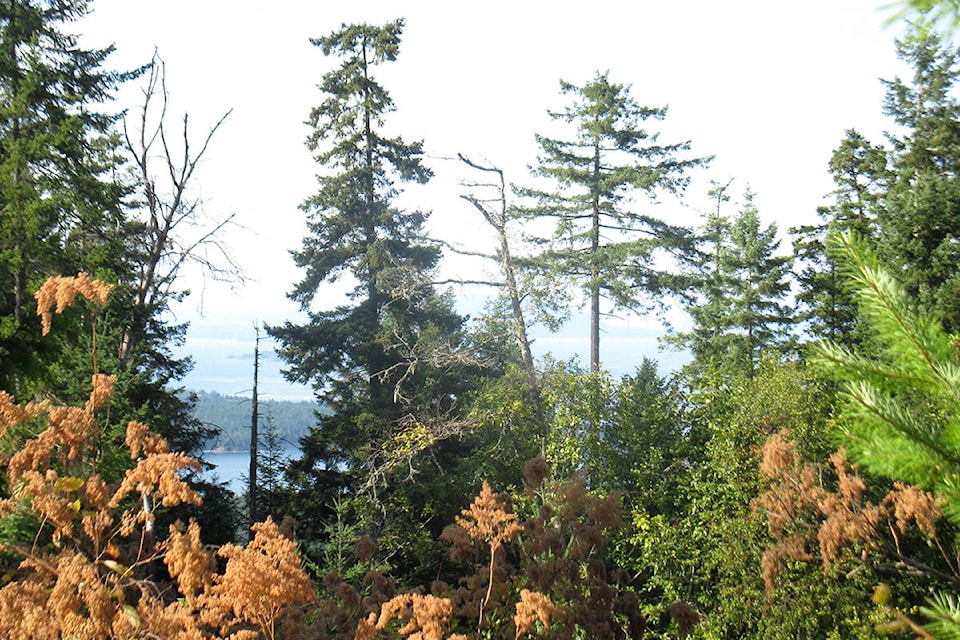In a ground-breaking approach to ecological protection, Lantzville council passed a motion to designate a little over four hectares of land in the Foothills as “future old-growth” zones, protected from human interference.
“With people fighting over the last stands of old growth on Vancouver Island, this is a new approach to try to create some and preserve it for future generations,” Coun. Ian Savage said during the final reading of the bylaw April 10. “The idea of this is just to establish the zone, so now that we have it we can apply it to other particular areas of the Foothills. The other aspect of this is also to encourage other municipalities to do the same so there’s an old growth for future generations that they can walk to from their municipality.”
To be classified as an old growth, coastal trees will need to be 250 years old. The future old-growth zone, however, allows for younger growths to become old.
While the designation might sound similar to park land, Savage told the News Bulletin there are several differences between the two. A wider range of activities can take place in a park, some of which may be disruptive to natural growth. Parks can have playgrounds, picnic areas, washrooms and more, while in a designated old-growth zone, the primary use of the land would be to grow a permanent old-growth forest. The zoning will allow nature viewing amenities on the condition that they must not cause damage to or disturb the growth of existing trees.
In a park, trees can also be removed for walking trails, but in a future old-growth zone, the only reason a tree can be removed is if it is identified as dangerous by a certified arborist or registered professional forester.
Savage said the district will be working with a forester in the next couple of years to identify other select areas in the Foothills to be zoned.
“It was short-sighted, I believe, to not have preserved more of Vancouver Island’s old-growth forest, so the solution to this is to simply set aside areas to grow more,” he said.
READ MORE: Leaked map shows B.C. at-risk old-growth site deferrals slow to materialize
In the third reading, Coun. Jonathan Lerner gave the bylaw his support but recognized that with the centuries it will take for those areas to become old growths, he will never get to experience it in his lifetime.
“I’ll be long gone before everyone enjoys it, but protecting the trees today ensures it for future generations,” Lerner said. “It’s been brought to council’s attention that there may be other areas in Foothills Park worth preserving, and without passing this bylaw we cannot designate anything ‘future old growth’ … If subsequent councils decide in the future to designate other areas to become old growth, that is wonderful.”
Before third reading took place, residents had the chance to present to council on the proposal.
One resident praised the bylaw amendment, while two others criticized council’s choice of land to designate. The two pointed to older areas of the Foothills that could be protected – as opposed to an area with younger trees to become future old growth.
Savage told the News Bulletin that he sees it as a positive that some of what the district is designating has cleared areas, because it can demonstrate to other municipalities that they don’t have to have the growth now to protect the land.
“It’s for a future generation, so if you have an area with hundred-year-old trees, you’re only getting a hundred-year head-start on an area with no trees. An important lesson for other areas to get started with it,” he said.
Savage said that when the district meets with other community leaders at the next B.C. Union of Municipalities convention, it will give them the opportunity to urge other coastal municipalities to follow Lantzville’s example.
“One important aspect of this is when the beauty of an old growth can be seen first-hand, more people will be inspired to protect them,” he said.
